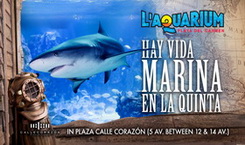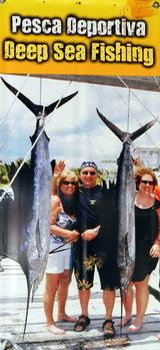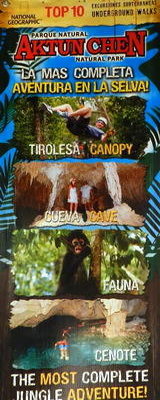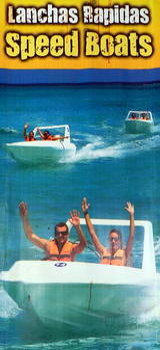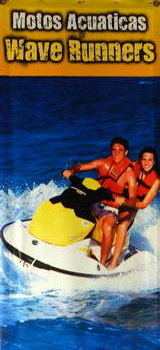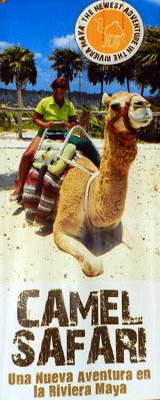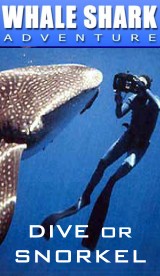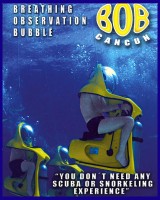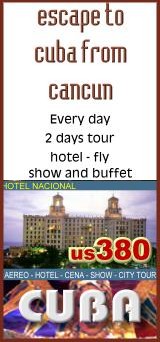|
Cancun in a
privileged site. Its strong currents enable it to maintain a high visibility. You can
found shark, turtles, stingrays, dolphins and perhaps a whale. With more of 20 dive sites,
it is an alternative to sports, fun, dinning and other entertainment options available.
Diving on Isla Mujeres is personalized and friendly, you won't find yourself squeezed in a
boat with 20 other divers aboard. A tranquil trip to Manchones reef is a delight at depths
of just 30 feet.
Manchones Chicos is made up of separated blocks of coral that reach up to the surface
where fan coral, sponges and a great quantity of tropical fish await.
Manchones Grandes is a wall of coral made up mostly of Elkhorn coral, here huge schools of
fish
like grey and yellowtail snapper and the extensive family of grunts add to the decoration
of the spectacular underwater environment.
Cuevones and Banderas reef, also in the Bay of Mujeres are full of beautiful color and an
abundance of marine life can be observed here at just 40 feet.
On the back side of the island, towards the open sea, a small barrier of coral known as
Media Luna reef offers the occasional opportunity of seeing
sharks that roam the area.
A visit to the shipwreck ultralteeze located 8 miles east of the island can be the
highlight of the day. Large barracuda, stingrays, horse-eye Jack and red snapper are
the most commonly seen in habitants at this extraordinary site. Recommended only for
certified divers, depths here reach 90 feet and the current is strong. Your guide should
be a divemaster or instructor.
DIVING CENOTES
Called end of last frontiers for exploration, the cenotes of the Yucatan are the scene of
concentrated effort by a dedicated team of divers, the CEDAM Cave Diving Team. Every year
since 1987 the CEDAM Cave Diving Team's Director, Mike Madden, has assembled a team of
divers and support personnel to pursue the exploration of an enormous underwater cave.
This colossal labyrinth called Nohoch Nah Chich is located just north of the ancient Mayan
city of Tulum. The Nohoch Nah Chich cave system now has 158,432 feet (30 miles) of
surveyed underwater passages and is listed In the Guinness Book of Records since 1991 as
the longest underwater cave system in the world. Underwater cave exploration involves a
fusion of trained and experienced team members and the utilization of specialized
equipment. Redundancy is a cardinal rule in cave diving as the environment is absolutely
fatal to a diver who cannot solve a problem. Many of the exploration dives m the Nohoch
system take the dive teams 12,000 feet from their point of entry. Diver propulsion
vehicles are used to speed the dive teams and out of the cave and multiple powerful
underwater lighting systems are corned to ensure that the team is not left without light
in the eternal darkness thousands of feet into the cave. Cenote means a
"natural well."
It is a form of collapse of the limestone karst at the land
surface. Limestone is a soft, porous, sedimentary rock that has evolved over millions of
years. The cycle of life in the oceans creates layers of sediments, corals and
animal remains that stack upon each other and fuse together from pressure. These layers
vividly show geological history and illustrate the evolution of life. It is a
masterpiece of what once existed in the past. The coastal area of the Yucatan
between Playa del Carmen and Tulum is an area of a low-relief lime stone crust with
minimal soil cover and rapid infiltration of rain water.
This means there is no way for
rain to drain on the surface. Thus, no rivers or streams exist in the Yucatan
peninsula. all water must drain or move underground. The logical direction is towards the
Caribbean Sea. This horizontal movement of water carves It's way to the sea following the
path of least resistance.
This meandering flow allows nature to weave a maze of
conduits much like a spider web. It has been determined that most of the water flows form
the northwest to south-east. It emerges along the Yucatan coast forming a vast array
of springs. Many are crescent-shaped inlets known as caletas. These underground streams
provide the opportunity for the formation of cenotes and a window to the aquifer system.
The size and shape can be al every dimension possible, cracks or holes. Because it is an
"overhead environment" there are only two ways the scuba diver can safely dive
the cenote. The best way is to seek training for this specialized type of diving.
|
